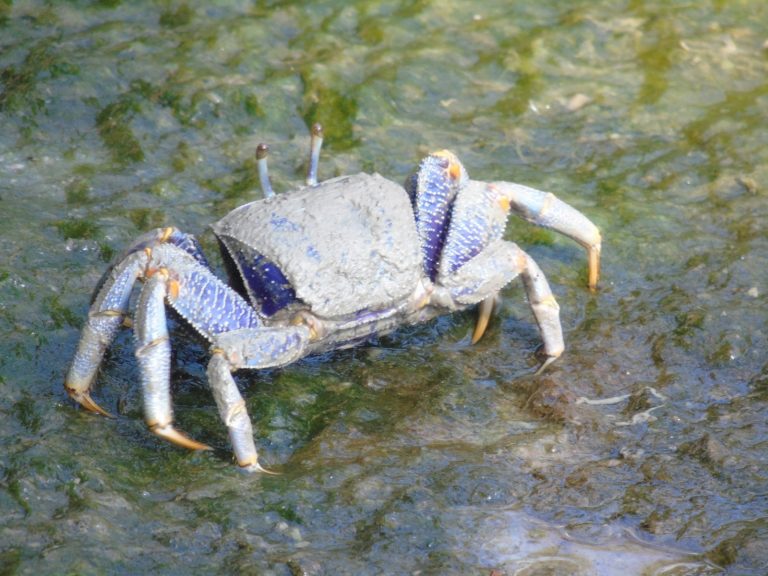Ever looked at a crab and wondered if they have eyebrows? It’s a silly question that pops into your head at the beach or while watching a nature show. The answer is no, crabs don’t have eyebrows like humans do. But they do have something that looks like eyebrows – tiny hair-like things called cirri that sit above their eyes.
These cirri aren’t eyebrows, but they’re useful for crabs. They help protect the crab’s eyes and can sense changes in water movement. Crabs use their compound eyes to see the world. These special eyes help them find food, avoid danger and get around.
Crabs have some cool body parts. They have ten legs, two big claws up front. They have a hard outer shell to protect them. They may not have true eyebrows but crabs are still pretty cool with lots of interesting stuff to learn about.
Anatomy and Physical Features
Crabs have body parts adapted for life in water. Their anatomy allows them to live in different environments and do special jobs.
Crab Eyes and Vision
Crabs have eyes on stalks. These eyes have many small lenses called ommatidia. Each lens captures light from a different angle. This gives crabs a wide field of view.
Crab eyes can see movement well. This helps them spot predators and prey. But their vision isn’t as sharp as human eyes. They see a mosaic of their surroundings.
The eye stalks can move independently. Crabs can look in different directions at once. This is helpful for being aware of danger.
Special Features and Functions
Crabs have some cool body parts that help them survive. Their claws or chelipeds are for defense and getting food. The big strong pincers can crush shells and grab prey.
Antennae help crabs sense their surroundings. These feelers pick up chemical signals in the water. This allows crabs to “smell” food and detect other crabs.
Crabs breathe through gills hidden under their shell. As they move, water flows over the gills. This brings oxygen to their bodies. It’s like how we breathe air but underwater!
Crab Shells and Growth
A crab’s hard outer shell is called an exoskeleton. It protects the crab’s soft insides. The main part of the shell covering the body is the carapace.
Crabs can’t grow inside their hard shells. So they molt. This means shedding their old shell and growing a new bigger one. Young crabs molt often as they grow.
Molting is risky for crabs. Their new shells are soft at first. This leaves them vulnerable to predators. Crabs hide until their new shell hardens.
As crabs get older they molt less often. When they reach their full adult size they stop molting altogether.
Behavioural Traits and Adaptations
Crabs have some cool ways of surviving and living in their environment. They use clever tactics to be safe, communicate with each other and live in different places.
Survival Strategies
Crabs are experts at hiding. They bury themselves in sand to avoid hungry predators. Some crabs can even change colour to blend in with their surroundings!
When danger comes crabs don’t just run away. They fight back with their strong claws. These pincers are good for defence and catching food.
Crabs also have a clever trick – they can deliberately lose a leg if a predator grabs it. Don’t worry it grows back later!
Communication and Socialising
Crabs may be quiet but they have their own way of talking. Fiddler crabs wave their big claw to say hello to other crabs. It’s like waving to a friend!
Some crabs make noise by rubbing body parts together. It’s like crickets chirping.
Crabs also use smell to talk. They release special chemicals into the water that other crabs can smell. It’s like leaving a note for your crab friends.
Habitat and Environmental Adaptations
Crabs live in all sorts of places – from deep oceans to sandy beaches. They have cool ways of surviving in each spot.
In rocky areas crabs have strong legs to grip and climb. Beach crabs dig fast to escape the hot sun and waves.
Some crabs like hermit crabs borrow shells from other animals for homes. They move into bigger shells as they grow – it’s like moving into a new house!
Crabs that live where the tide comes and goes are tough. They can breathe in water and air and can handle big temperature changes. Pretty cool huh?



0 Comments